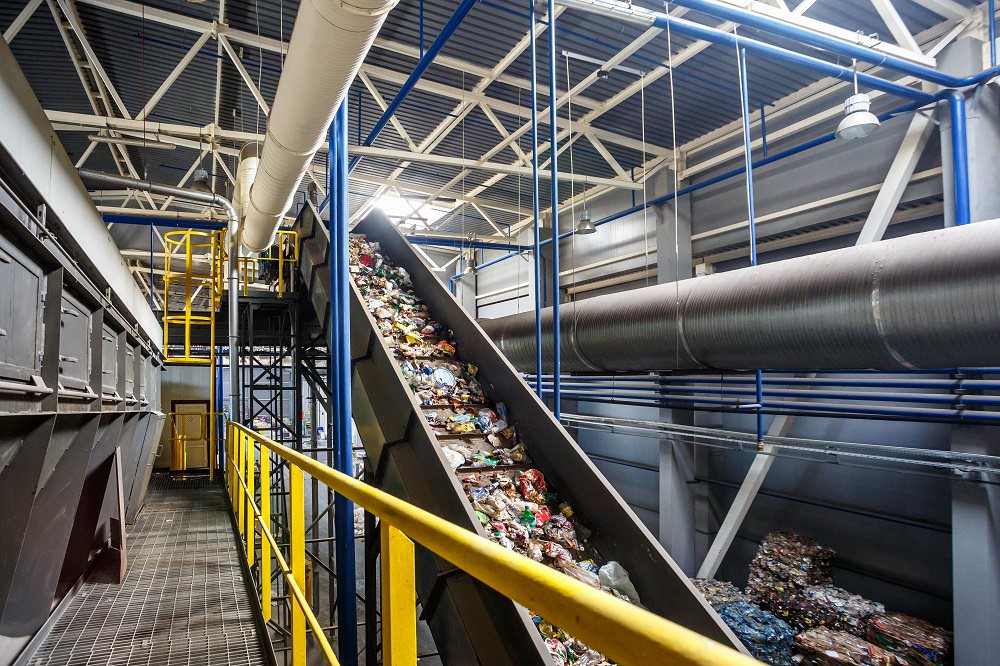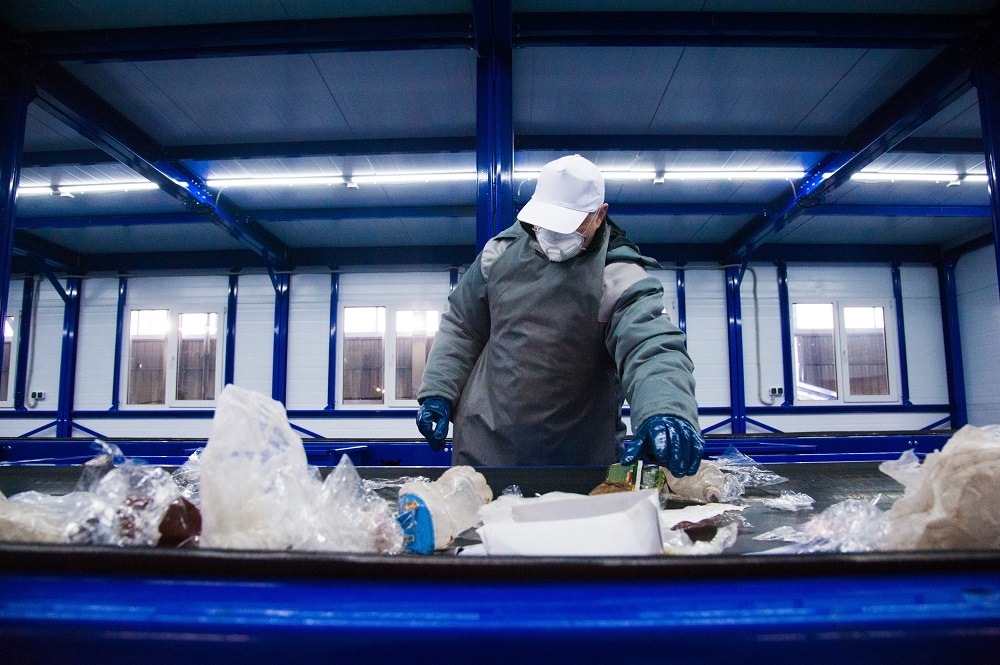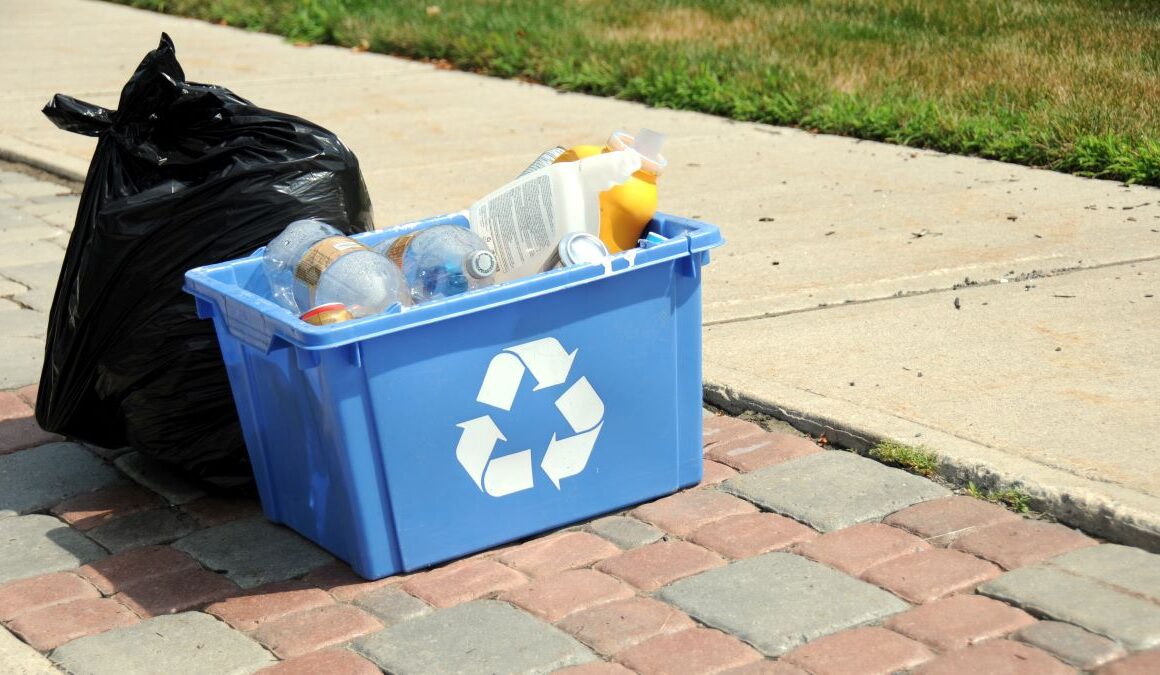How Curbside Recycling Works – Earth911
Humans create a lot of waste, but when you throw something away, how much do you know about where it goes or how it’s handled? This article is the last in a five-part series that explores what happens to the tons of materials we discard.
Few environmental lessons have taken hold as strongly in the United States as the imperative to recycle. For some people, recycling serves as a proxy for sustainability; a full recycling bin excusing any number of wasteful practices. But recycling is not the be-all-end-all solution for our environmental woes. The American recycling system is facing some serious woes of its own.
If you haven’t looked at recycling beyond wheeling your cart out to the curb, here is an introduction to what happens after the truck picks it up.
Source-Separated or Single-Stream
Older readers will remember the early days of source-separated recycling when every material required its own bin, and even different colors of glass had to be separated. Households often had to drop off multiple containers at the recycling center on weekends. Even in communities that collected recycling at curbside, taking time to separate materials at home and maintaining numerous bins was an obstacle to recycling.
Garbage collectors began to offer single-stream recycling in the ‘90s. Also referred to as “commingled,” “single-bin,” or “all-in-one recycling,” single-stream recycling allows households to toss all recyclables together in one bin. With the advent of single-stream recycling, recycling rates took off, but so did contamination rates. Even with higher prices and more contamination, single-stream recycling was an environmental win for about 20 years.

The Recycling System
Like garbage disposal and large-scale composting, recycling is a big business that is usually conducted through government contracts. Recyclable materials are commodities, with prices that fluctuate according to market demand. Curbside recycling is picked up by large dump trucks and delivered to a materials recovery facility (MRF, or “murph”).
MRFs do not actually recycle materials, they sort them for recycling. They are essentially large sorting lines, where human laborers supplement a series of mechanical systems to separate recyclables by type, usually into large bales. Although MRFs are quite efficient, materials like plastic bags can jam machinery, leading to costly downtime. And contaminants — from food waste to nonrecyclable plastics or products made from multiple materials — can pass through the system and end up in bales with the commodities. The contamination rate affects the price, and past a certain threshold, the entire bale becomes unrecyclable.
In theory, recycling processors purchase baled recyclables and manufacture new products with them. There are some domestic processors for paper, metal, and plastics. But in 2017, America exported one-third of its recycling to China. With an average contamination rate of 25%, further sorting was necessary before the materials could be recycled in Chinese facilities. But lax environmental laws put workers at risk and led to the uncontrolled disposal of nonrecyclable contaminants. Then, in 2018, China effectively banned foreign recyclables, mainly to spur their own domestic recycling economy. America was left literally holding the [plastic] bag.

System Disruption
The Chinese ban on foreign recyclables completely disrupted the U.S. recycling system and served as a wake-up call on overdue system improvements. Contractually obligated to accept the materials, but unable to find a buyer, many recyclers began stockpiling the materials they collected. Some recycling facilities found markets in Thailand, Vietnam, Indonesia, and India. But those countries would need to scale up their processing capacity to handle the volume that China once did, and have started placing their own restrictions to control the flow.
With international markets closed and domestic processors limited, local recycling programs suffered. In some places where residents continued to separate recyclables and garbage, both materials streams ended up in the landfill or incinerator anyway. Lacking long-term solutions, many communities had to raise collection rates or officially abandon their recycling programs. Even famously pro-recycling Seattle decided to stop accepting plastic bags and plastic film in curbside recycling in an effort to make its program more efficient.

Future of Recycling
Not all of the changes in domestic recycling as a result of China’s ban have been negative. U.S. businesses are letting go of the idea that the Chinese might relax their rules. And they are beginning to build long-term domestic solutions. Around the country, some paper mills have begun retooling to process waste paper and at least one shuttered mill is reopening. Plastic and scrap metal recycling plants have seen increased investment. Ironically, much of the initial investment was coming from Chinese companies, but it still builds domestic recycling capacity.
The cost of domestic processing will necessarily be much higher than export to China, where environmental laws are lax and labor is cheap. It will only be feasible if the recyclables are much cleaner than what we used to send to China. One possibility would be a return to source-separated recycling. However, the industry is reluctant to abandon the investments they’ve made in MRFs, which are actually quite good at separating clean commodities.
The high contamination rate has a lot to do with what the industry calls “aspirational recycling.” You may also hear it called “wishful recycling.” Feeling guilty about throwing things away, many people place items in the recycling bin that don’t belong there. Or, misunderstanding the rules, they put all plastics in the bin when only some plastics are accepted. Around the country, local recycling programs are stepping up efforts to educate residents.
What to Do
Even — or perhaps especially — if you are a conscientious recycler, you should know the rules of recycling are in flux in the U.S. The lingering effects of the China ban — plus the impacts of COVID-19 — continue to disrupt recycling services around the country. Check with your local recycling provider to find out what is currently recyclable in your community and learn about best practices. When in doubt, throw it out. If that grates against your sensibilities, turn that energy into generating less waste in the first place.
Will the U.S. build sufficient infrastructure to process our own waste or will we find new places to send our recyclables in the future? No one knows for sure. But one thing is certain: no matter who processes recyclables going forward, they will require us to do a better job of separating the trash from the commodities.
Read part one of this five-part series, Understanding Where Garbage Goes. Originally published on November 12, 2019, this article was updated in January 2022.


